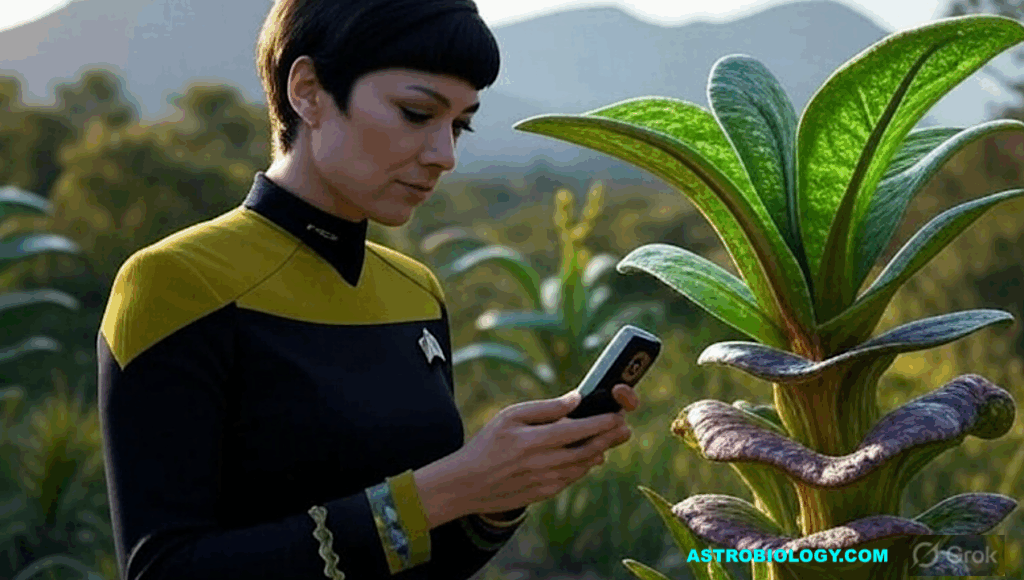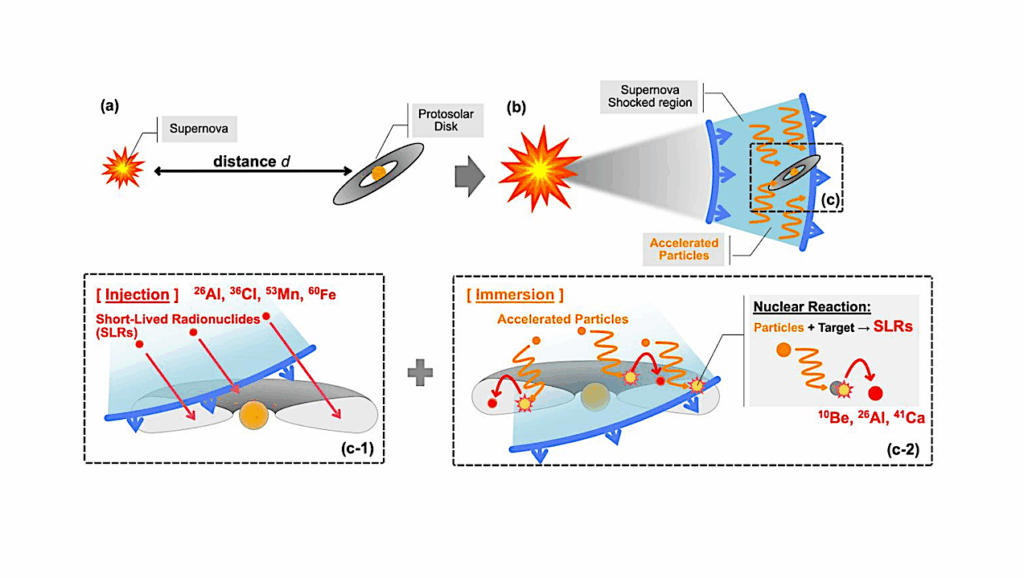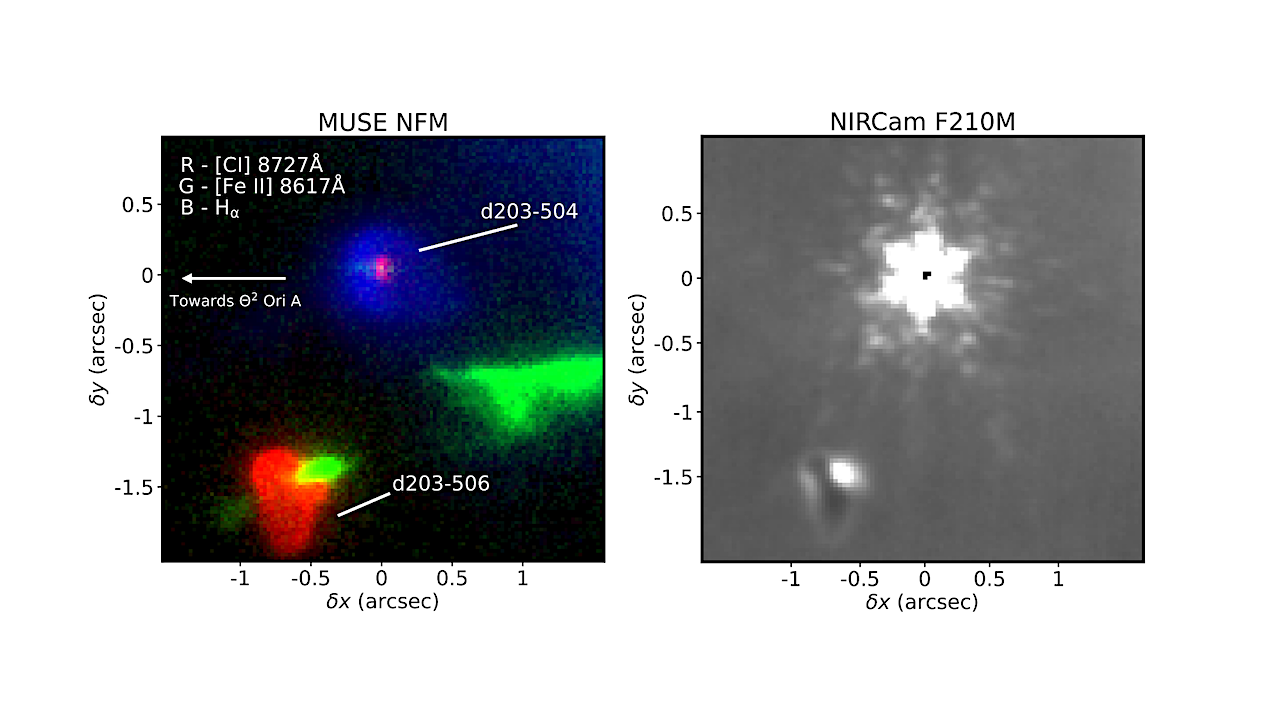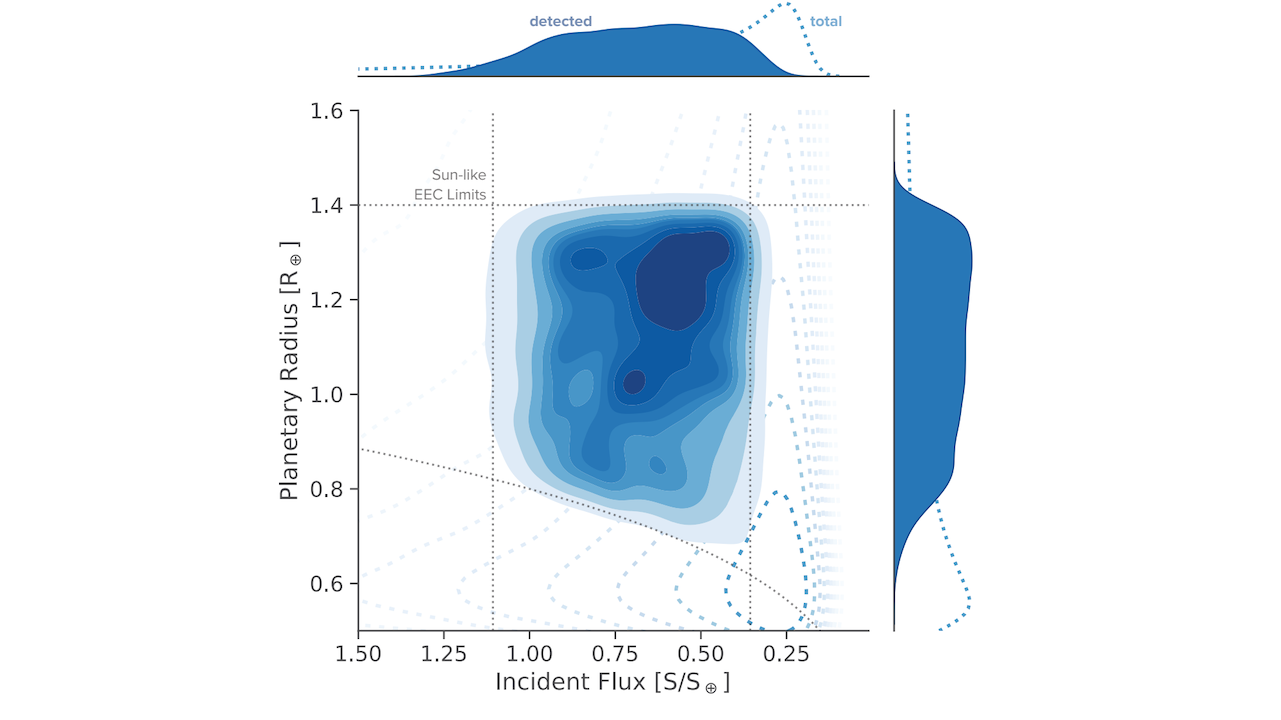Now Reading: Charting Circumstellar Chemistry of Carbon-rich Asymptotic Giant Branch Stars. II. Abundances and Spatial Distributions of CS
-
01
Charting Circumstellar Chemistry of Carbon-rich Asymptotic Giant Branch Stars. II. Abundances and Spatial Distributions of CS
Charting Circumstellar Chemistry of Carbon-rich Asymptotic Giant Branch Stars. II. Abundances and Spatial Distributions of CS
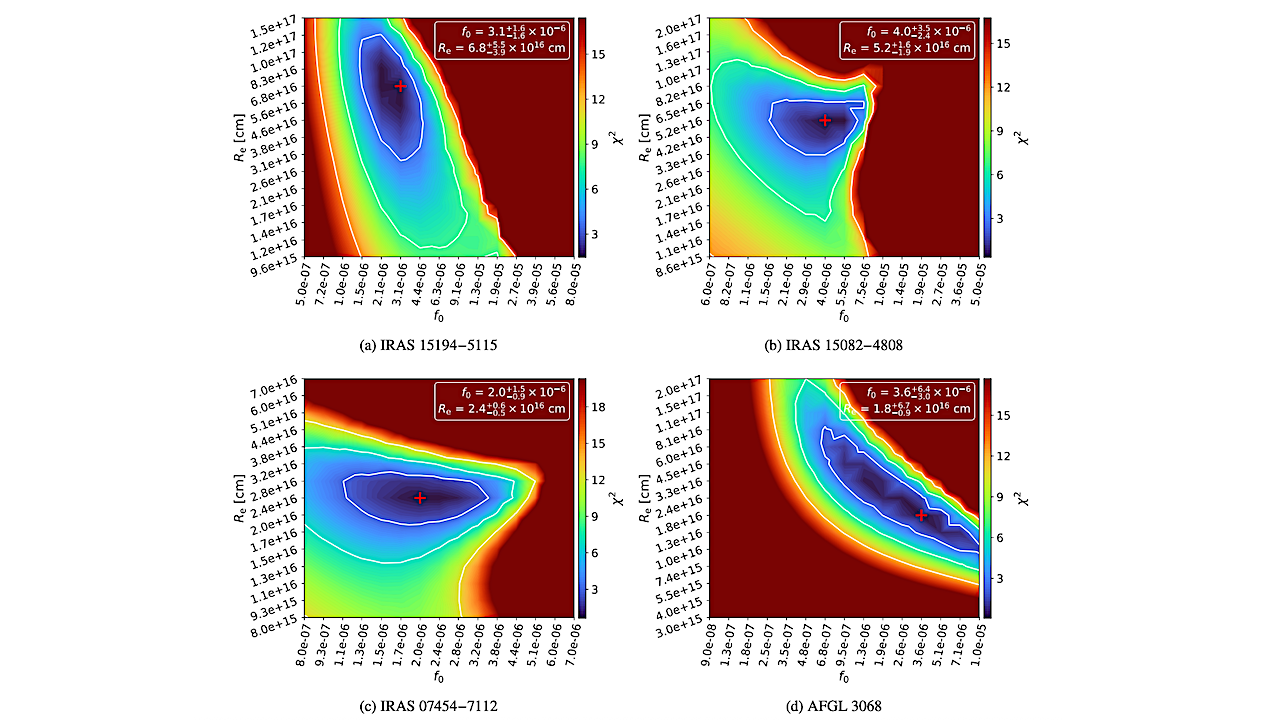

χ2 maps for the CS RT models. The free parameters f0 and Re are on the x− and y−axes, respectively. The red + sign denotes the best-fit model, and the white contours correspond to the 1σ, 2σ, and 3σ ranges. — astro-ph.SR
The circumstellar envelopes (CSEs) of asymptotic giant branch (AGB) stars harbour a rich variety of molecules and are sites of complex chemistry.
Our current understanding of the circumstellar chemical processes of carbon-rich AGB stars is predominantly based on observations of a single star, IRC+10216, often regarded as an archetypical carbon star.
We aim to estimate stellar and circumstellar properties for five carbon stars, and constrain their circumstellar CS abundances. This study compares the CS abundances among the sources, informs circumstellar chemical models, and helps to assess if IRC+10216 is a good representative of the physics and chemistry of carbon star CSEs. We modelled the spectral energy distributions (SEDs) and CO line emission to derive the stellar and outflow properties.
Using these, we then retrieved CS abundance profiles with detailed radiative transfer modelling, imposing spatial and excitation constraints from ALMA and single-dish observations. We obtain good fits to the SEDs and CO lines for all sources and reproduce the CS line emission across various transitions and apertures, yielding robust estimates of the CS abundance profiles. Peak CS fractional abundances range from 1×10−6 – 4×10−6, with e-folding radii of 1.8×1016 – 6.8×1016 cm. We also derive reliable 12C/13C and 32S/34S ratios from CS isotopologue modelling.
Our results refine previous single-dish CS abundance estimates and improve the relative uncertainty on the CS e-folding radius for IRAS 07454−7112 by a factor of ∼2.5. Chemical models reproduce our estimates of the CS radial extent, corroborating the CS photodissociation framework used therein. We find no significant differences between the derived CS abundance profiles for IRC+10216 and the rest of the sample, apart from the expected density-driven variations.
R. Unnikrishnan, M. Andriantsaralaza, E. De Beck, L. -Å. Nyman, H. Olofsson, W. H. T. Vlemmings, M. Maercker, M. Van de Sande, T. Danilovich, T. J. Millar, S. B. Charnley, M. G. Rawlings
Comments: 18 pages, with 7 figures and 4 tables in the main text. 4 appendices contain additional figures and tables. Total 31 pages. Accepted for publication in Astronomy & Astrophysics
Subjects: Solar and Stellar Astrophysics (astro-ph.SR)
Cite as: arXiv:2505.22173 [astro-ph.SR] (or arXiv:2505.22173v1 [astro-ph.SR] for this version)
https://doi.org/10.48550/arXiv.2505.22173
Focus to learn more
Submission history
From: Ramlal Unnikrishnan Nair
[v1] Wed, 28 May 2025 09:45:58 UTC (26,174 KB)
https://arxiv.org/abs/2505.22173
Astrobiology, Astrochemistry,
Stay Informed With the Latest & Most Important News
-
 012024 in Review: Highlights from NASA in Silicon Valley
012024 in Review: Highlights from NASA in Silicon Valley -
 02Panasonic Leica Summilux DG 15mm f/1.7 ASPH review
02Panasonic Leica Summilux DG 15mm f/1.7 ASPH review -
 03From Polymerization-Enabled Folding and Assembly to Chemical Evolution: Key Processes for Emergence of Functional Polymers in the Origin of Life
03From Polymerization-Enabled Folding and Assembly to Chemical Evolution: Key Processes for Emergence of Functional Polymers in the Origin of Life -
 04How New NASA, India Earth Satellite NISAR Will See Earth
04How New NASA, India Earth Satellite NISAR Will See Earth -
 05And Thus Begins A New Year For Life On Earth
05And Thus Begins A New Year For Life On Earth -
 06Astronomy Activation Ambassadors: A New Era
06Astronomy Activation Ambassadors: A New Era -
07SpaceX launch surge helps set new global launch record in 2024













